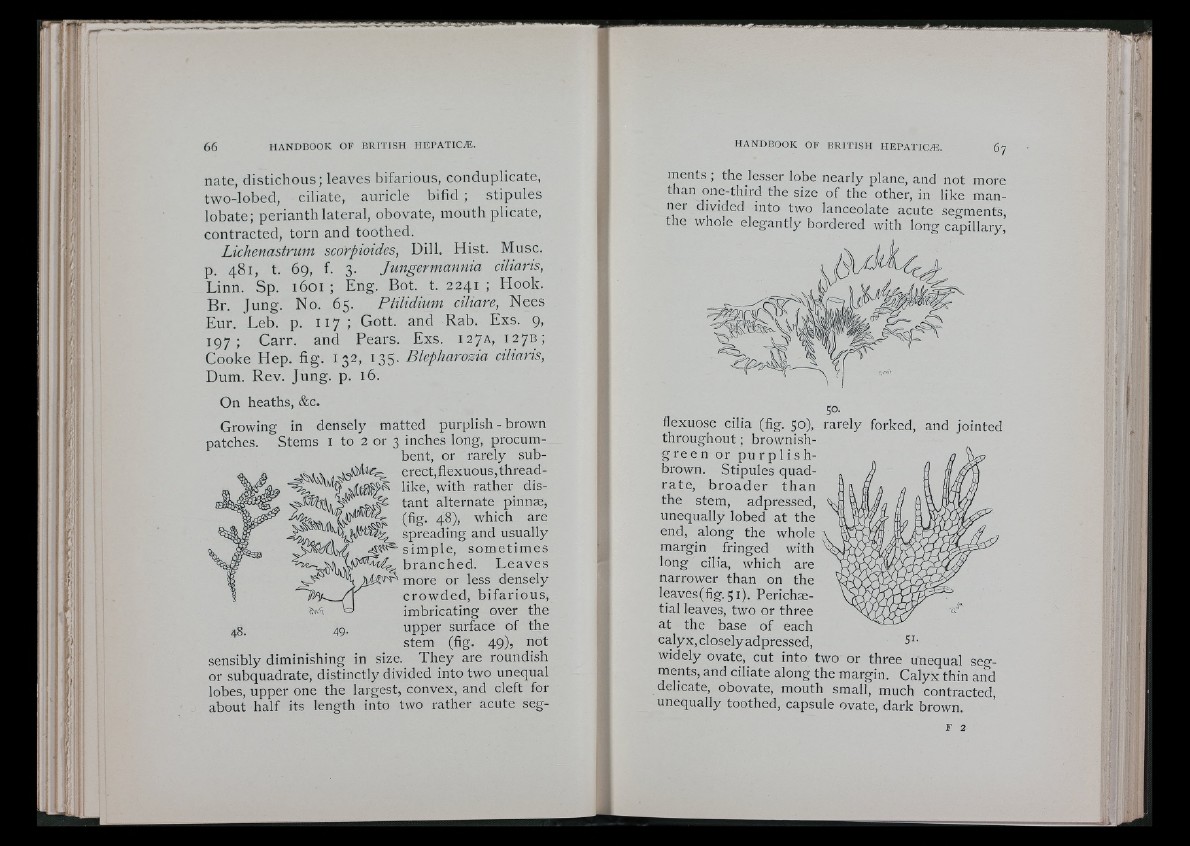
fi
66
nate, dis t ichous ; leaves bifarious, conduplicate,
two-lobed, ciliate, auricle bifid ; st ipules
lobate; perianth lateral, obovate, mouth plicate,
contracted, torn and toothed.
Lichenastrum scorpioides, Dill. Hist. Muse,
p. 481, t. 69, f. 3. Jungermannia ciliaris,
Linn. Sp. 1601 ; Eng. Bot. t. 2241 ; Hook.
B r . fung. No. 65. Ptilidium cihare, Nees
Eur. Leb. p. 1 1 7 ; Gott. and Rab. Exs. 9,
1 9 7 ; Car r , and Pears. Exs. 127A, 1271?;
C o o k e Hep. f ig . 132, 135. Blepharozia ciliaris,
Dum. Rev. Jung. p. 16.
On heaths, &c.
Growing in densely matted purplish - brown
patches. Stems i to 2 or 3 inches long, procumbent,
or rarely sub-
erect, flexuous, threadlike,
with rather distant
alternate pinnm,
(fig. 48), which are
spreading and usually
s imple , some t ime s
b ran ch ed. L e a v e s
'a more or less densely
c rowd ed, b i fa r ious ,
imbricating over the
upper surface of the
stem (fig. 49), not
sensibly diminishing in size. They are roundish
or subquadrate, distinctly divided into two unequal
lobes, upper one the largest, convex, and cleft for
about half its length into two rather acute seg49.
1
ments ; the lesser lobe nearly plane, and not more
than one-third the size of the other, in like man-
nci divided into two lanceolate acute segments,
the whole elegantly bordered with long capillary’
50.
flexuose cilia (fig. 50), rarely forked, and jointed
throughout; brownish-
g r e e n or p u r p l i s h -
brown. Stipules quadrate
, b ro ad e r than
the stem, adpressed,
unequally lobed at the
end, along the whole
margin fringed with
long cilia, which are
narrower than on the
leaves(fig.5i). Perichsetial
leaves, two or three
at the base of each
calyx, closely adpressed,
51-
widely ovate, cut into two or three unequal segments,
and ciliate along the margin. Calyx thin aiM
delicate, obovate, mouth small, much contracted,
unequally toothed, capsule ovate, dark brown.